Download our free Monitoring Fundamentals Tutorial.
An introduction to Monitoring Fundamentals strictly from the perspective of telecom network alarm management.
1-800-693-0351
Have a specific question? Ask our team of expert engineers and get a specific answer!
Sign up for the next DPS Factory Training!

Whether you're new to our equipment or you've used it for years, DPS factory training is the best way to get more from your monitoring.
Reserve Your Seat TodayD-Wire sensors are a way to track environmental levels in your server room (wide range temperature support: -40 to 180 degrees F), PBX closet, or data center using minimum analog capacity. With the TempDefender's D-Wire sensors, you don't have to worry about analog capacity on your RTUs, tangled masses of sensors at your RTU, or even the trouble of wiring analog connectors.

D-Wire sensors from DPS use simple RJ-11 connectors, in and out, and allow you to chain up to 16 sensors to a single TempDefender D-Wire port. Your sensor chain can run a maximum of 600 feet, so you can run sensors out as far as you need to monitor your equipment, without having to place analog-capable RTUs in multiple places. Note: Internal D-Wire sensors (for internal temperature or internal voltage monitoring, for example) impact total sensor cable length.
The maximum length of a D-Wire daisy chain varies depending on the number of sensor nodes in the chain. A single sensor can receive power and transmit data over 600 feet of wire (for example, 3 sensors could have lengths less than or equal to 200 feet). Adding sensors to the chain consumes more power and reduces the maximum allowable wire length.
Below are some TempDefender sensor ordering options:
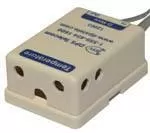
Temperature Sensor (D-PK-DSNSR-12001)
Temperature sensor that connects to the DPS Sensor network. This sensor can report live-analog values for monitoring temperature within +/-2 degrees F.
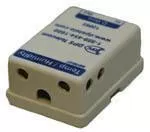
Temperature & Humidity Sensor (D-PK-DSNSR-12002.00002)
Monitor temperature and humidity using the D-Wire Temperature and Humidity combination sensor. This device can accurately report the live-analog values for temperature (+/- 2 degrees F) and humidity (+/0 4% RH).
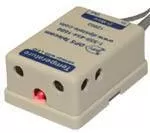
Temperature Sensor w/ LED (D-PK-DSNSR-12003)
An additional LED on this D-Wire Temperature Sensor gives a visual notification on the sensor. Much like the standard Temperature Sensor, this device will monitor live-analog values and can report temperature within +/- 2 degrees F of the actual value.
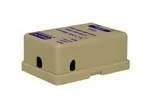
Batt.Cell Voltage Sensor (D-PK-DSNSR-12004)
Battery Voltage Monitor & Temperature Probe that connects into the DPS Sensor network. This sensor is ideal for the digital inputs located on the Battery Voltage Monitor G2. Battery voltage range options include: 0VDC - 5VDC, 0VDC - 12VDC, 0VDC - 16VDC, and 0VDC - 60VDC.
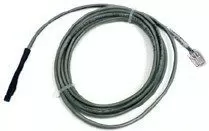
Temperature External Sensor Probe (D-PK-DSNSR-12008)
External 8 foot temperature probe that is compatible with the DPS sensor network. This sensor may be plugged directly into a D-Wire point of a DPS RTU or may be the terminating point of a daisy chain of D-wire sensors. Note: This sensor probe is not daisy chainable.
Note: Distances will vary depending on D-Wire capable RTU. Consult applicable product section for product-specific D-Wire information. DPS recommends that no more than 16 sensors are used on a single chain, although up to 32 are supported on some platforms.
| D-Wire Temperature and Humidity Sensor Full Specifications | |
| Dimensions: | 2.25"H x 1.625"W x .9375"D |
| Weight: | 0.38 lb |
| Operating Temperature: | -40 to 180 degrees F (-40 to 82.2 degrees C) |
| Accuracy: | +/- 2 degrees F and +/- 4% RH |
| Aggregate Length: | 40 to 800 feet |
See Also: Data Center Management Techniques
All DPS Telecom products include comprehensive technical support. If you've purchased one of our products and are encountering any kind of issue, contact DPS Tech Support today at 559-454-1600.
At DPS Telecom, the representative who answers your call isn't an intern reading from a script. DPS Tech Support representatives are engineers who contribute to product development. And, if your problem requires additional expertise, the DPS Engineering Department that designed your product is right down the hall.
Help us connect you to the right engineer by filling out this quick questionnaire. Simply leave your contact information to get started, and we'll call you back. Most preliminary discussions are about 15 minutes, and afterward, we'll send you a custom application diagram of a recommended solution that'll make it easier to justify your project to management.